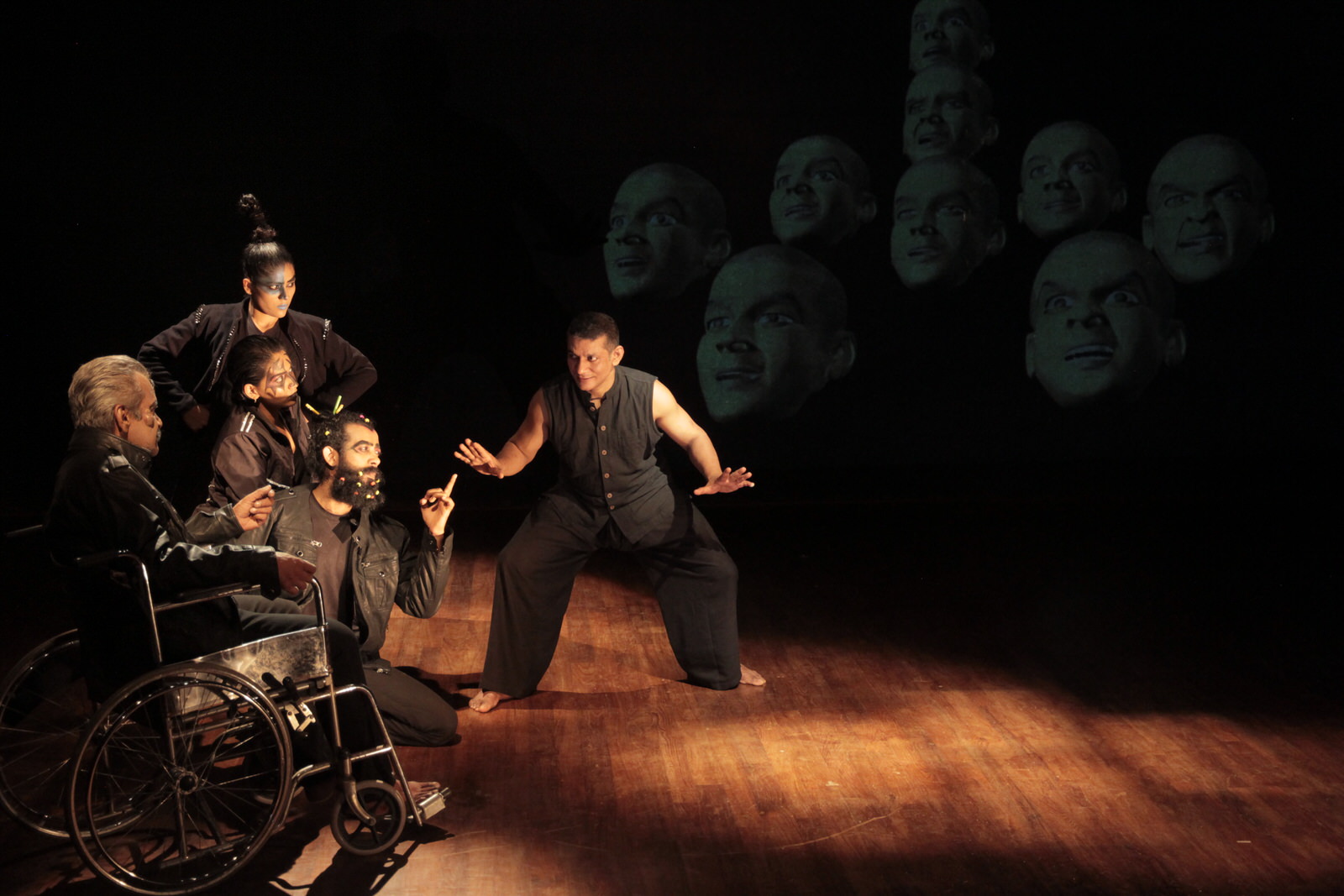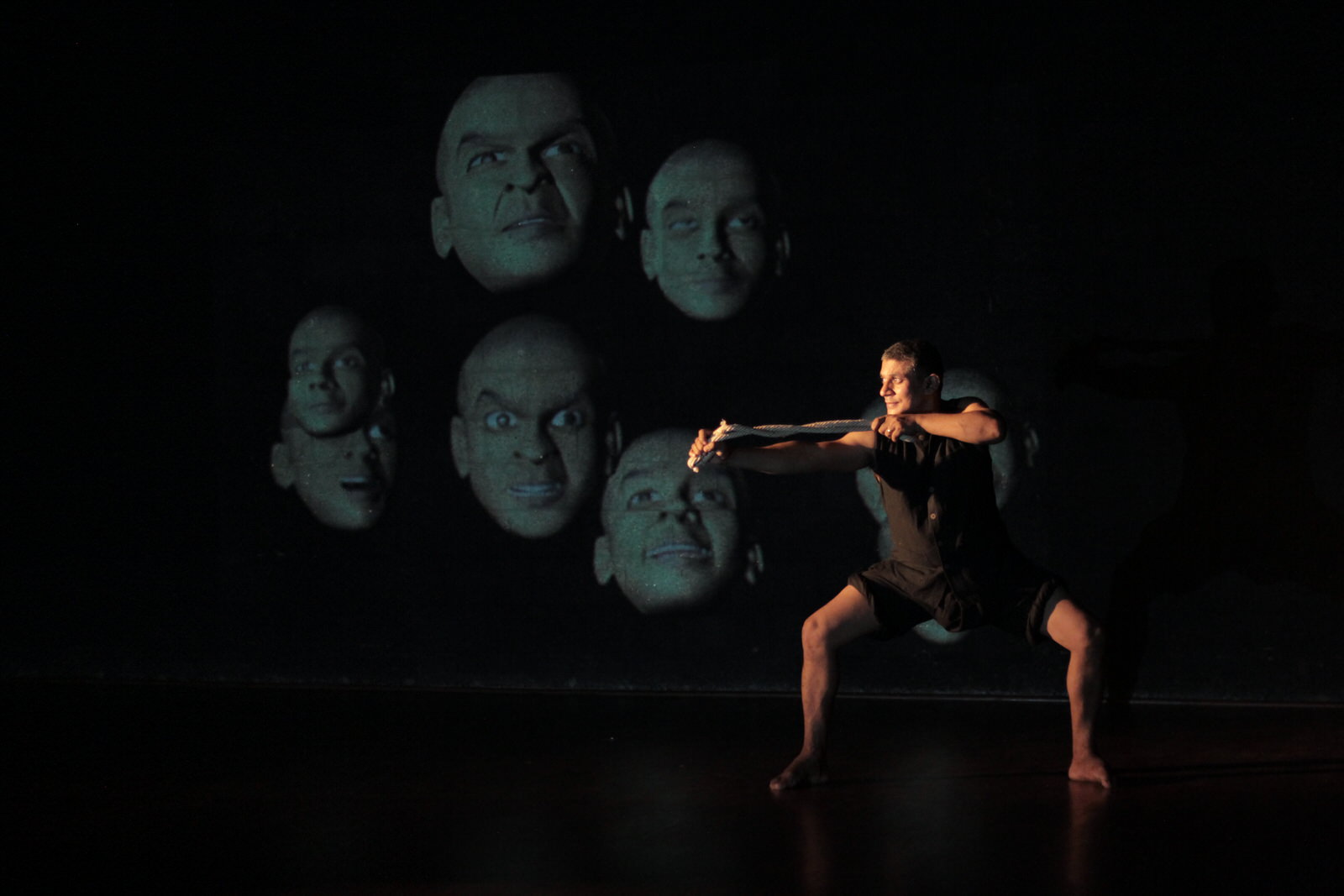
In The Tenth Head, the ten heads of Ravana become a metaphor for the tension that exists between the individual and the collective. In the play, nine of the ten heads of Ravana are a company who are quite happy to conform to a common way of seeing things. Their individuality is limited to each representing one of the nine emotions/ bhavas, from the traditional Indian aesthetic. The tenth however is the odd man out.
In the Ramayana, Ravana the King of Lanka, is the main antagonist. He kidnaps the protagonist’s wife, Sita, in an act of revenge and with the intention of provoking a war; or, as in some other versions, out of helpless lust. He is said to have captured the kingdom of Lanka from his half brother Kubera, robbed him of his wealth and relieved him of his famous flying chariot. But his villainy is tempered by certain other qualities he possesses. He is a great ruler, a scholar, a player of the Veena and a powerful worshipper of Siva.
Indeed he is said to have composed the Siva Tandava Stotra. In folk, popular and classical art he is depicted with ten heads; and sometimes nine, the tenth having been sacrificed to Siva. Another version says he sacrificed all ten heads to Siva in the hope of receiving the boon of immortality, which he was given along with the return of his heads.
The Tenth Head does not fit in graphically or psychologically with the other nine heads. He does not want to dumb down so as to be the average man in the collective. And he believes that nine heads on a torso make greater geometric and aesthetic sense than ten. So tentatively he looks either for independence from the others or failing that an equitable relation with them so that he can give free expression to his unique thoughts. He asks a group of artists to work around the conundrum of his visibility in graphic representation.
However it becomes increasingly apparent that the tenth head is quite different from the other nine; for he has a totally unique take on Ravana’s actions with regard to Kubera, war, flying and Sita, among other issues. In the end he quietly finds his own solution to the problem, while the artists highhandedly impose their skewered interpretation of the ten heads on the world and posterity.
Performers: The 10th head: Vinay Kumar
Artists: Suresh Kaliyath, Nimmy Raphel, Arvind Rane
Musicians: Suresh Kaliyath (Chenda), Nimmy Raphel (Vocal & Mizhavu), Arvind Rane (Idakka)
Production: Animation: Anoop Davis
Animation & Sound Operation: Apoorva Arthur
Light Design: Vinay Kumar
Light Operation: Anoop Davis
Costumes: Upasana Auroville
Playwright: Vinay Kumar
Director: Veenapani Chawla
Anmol Vellani: Music composition for songs –Call me Head & Once a fool wanted to fly and other creative suggestions.
Having performed at various festivals, conferences and workshops, we cater to different audiences who would like to enjoy and explore modern Indian theatre. Our performances are enjoyed by audiences across all age groups.
To know more about the productions currently available for performance booking, please contact us.
Get in Touch


© Copyright 2025 Adishakti Theatre Arts. All rights reserved.